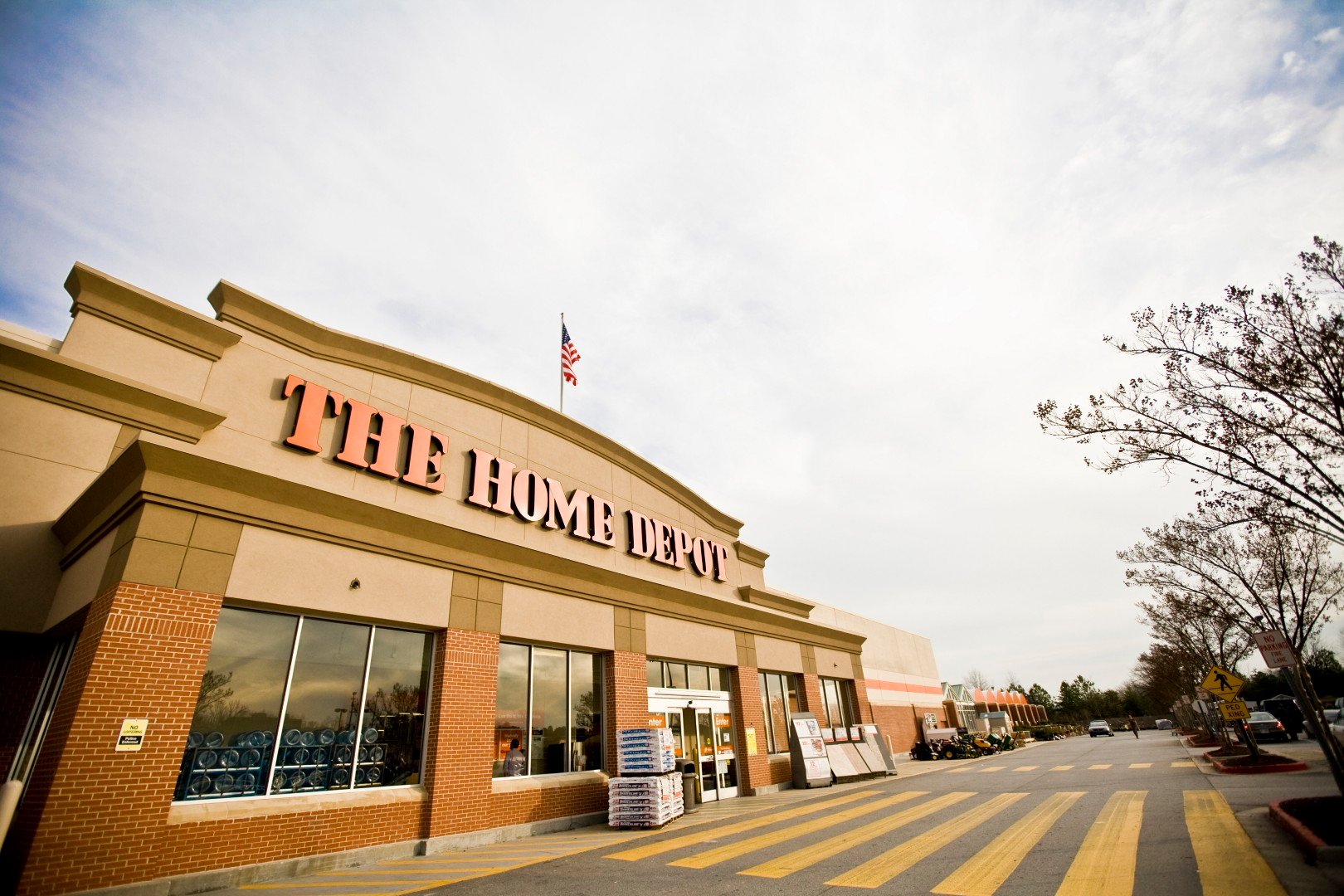When American consumers begin practically any kind of home-improvement project, there are really only two places to to shop for the materials and tools they need: Home Depot Inc. (HD 0.41%) or Lowe's Companies, Inc. (LOW +0.03%). Ultimately, consumers will choose the store that has the most convenient location, best prices, and best products available. In a similar fashion, if investors were to choose which of these home-improvement retailers to invest in, they would have to consider growth rates, strategies, and valuations. Let's do just that to determine which of these companies makes for a better investment today.
The case for Home Depot
In 2017, Home Depot had its first year ever with sales totaling more than $100 billion, as sales eked past the landmark total with $100.9 billion, good for a 6.7% year-over-year increase. Earnings per share in fiscal 2017 increased an even more robust 13% to $7.29. Comparable store sales increased 6.8%, driven by a 4.5% increase in average ticket price and a 2.2% increase in customer transactions.

American consumers go to Home Depot or Lowe's for almost all of their home-improvement needs. Which makes for a better investment today? Image source: Getty Images.
One of the greatest areas of success the company has is attracting Pro customers. Pro customers are "primarily professional renovators/remodelers, general contractors, handymen, property managers, building service contractors, and specialty tradesmen, such as installers." These customers are extremely important because they almost always spend more and make more trips to Home Depot as they undertake large projects for their customers.
At a recent investor conference, management said sales to Pro customers represent about 40% of total sales. While this is a sizable chunk, Pro sales are also increasing faster than sales to other customers. In 2017's first-quarter conference call, sales to Pro customers were said to be growing twice as fast as sales to DIY customers. In the year's final three quarters, Pro sales were said to be outpacing DIY sales.
Home Depot has also shown huge success with its e-commerce operations. In Q4, online sales increased 21% year over year and now make up 6.7% of all sales. In each of the past four years, the online business has grown by at least $1 billion. The company has worked hard to ensure it doesn't just have a successful online silo and a successful brick-and-mortar silo, but also a successfully integrated retail operation so that customers can make purchases whenever and however they want. There seems to be proof that this "One Home Depot" strategy is working: 60% of all purchases, whether online or in-store, are influenced by a digital visit, and 46% of all online orders are picked up in-store.
Based on its full-year guidance of $9.31, Home Depot is currently valued at a forward P/E ratio of 19.56. The company raised its quarterly dividend in Q4 by 15.7% to $1.03, giving it a 2.26% dividend yield with a payout ratio of 44.25%. The company repurchased $8 billion of common stock in 2017 and expects to buy back $4 billion of shares this year.
The case for Lowe's
Last year, Lowe's struggled to put its best foot forward. Net sales did rise to $68.6 billion, a 5.5% year-over-year increase, and adjusted earnings per share grew to $4.39, a 10% year-over-year increase. In the fourth quarter, however, net sales, adjusted EPS, gross margin, and customer transactions all declined.
As with Home Depot, capturing pro customers is extremely important for Lowe's. In the company's third-quarter conference call, management said sales to Pro customers made up about 30% of sales. In an investor conference last year, Lowe's let on that the figure could rise to as high as 35% over the next five years. As at Home Depot, Pro sales are outpacing sales to DIY customers, and Lowe's has rolled out initiatives offering an exclusive website for Pros, lowesforpros.com, and giving Pro customers two-hour delivery windows.
In Q4, Chief Operating Officer Richard Maltsbarger also talked about the company's growing online operations:
We also continued to execute on our strategic priorities, driving comp growth of 28% on Lowes.Com, the result of strong customer response to our enhanced online shopping experience. We have optimized functionality and displays for touchscreen devices to support a better mobile experience, improved product content recommendations, refined search algorithms, improved click-to-chat capabilities, and optimized our assortment informed by digital line reviews.
Lowe's has not recently updated investors on how much of its total sales originate online, but in the 2016 annual report it was listed as 3.5%.
Based on the midpoint of its full fiscal year guidance, Lowe's trades at a forward P/E ratio of 16. In today's market, that's just downright cheap. The company has raised its dividend for 56 consecutive years, making it a distinguished Dividend Aristocrat, a claim not even Home Depot can make. Based on its quarterly dividend of $0.41, the stock offers a 1.88% dividend yield with a payout ratio of about 30% based on guidance.
Why Home Depot gets my vote
While both are quality businesses, one is clearly executing better than the other right now at its most important goals. Home Depot's online sales makes up 6.7% of all sales, and Lowe's is little more than half that. Home Depot's Pro sales are 40% of its total; Lowe's is at 30%. In just too many different areas, Lowe's appears to be a step behind Home Depot. For income investors, both offer similar yields that are well covered by earnings. While Lowe's is currently valued at a cheaper forward multiple, I am reminded of one of Warren Buffett's most famous sayings: "It's far better to buy a wonderful company at a fair price than a fair company at a wonderful price." For that reason, I am happily invested in Home Depot shares while waiting for Lowe's to show better business performance before considering an investment.







